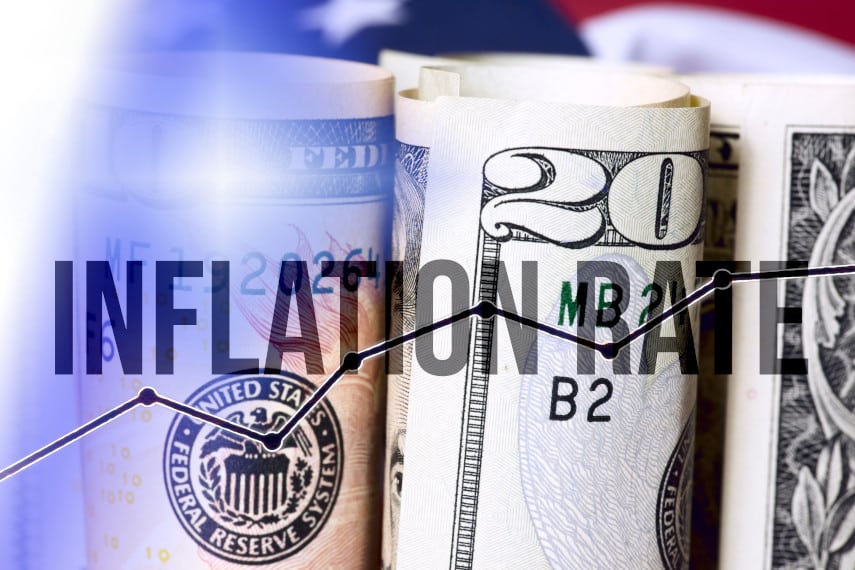6 Indicators of a Potential Recession
It seems that in the media today there are more and more mentions of the dreaded R-word: recession With growing economic uncertainty, the threat of potential recession seems to be growing as...
Economy

Anyone who thought that the Federal Reserve would be able to bring inflation down with its latest steps to tighten monetary policy was disappointed with last week’s inflation numbers. The consensus estimate was for inflation to drop slightly to 8.2% year on year. But the day before the numbers were released, there was sudden panic in markets as some expected inflation to overshoot those numbers.
Not only did inflation numbers come in above the consensus forecast, they also exceeded some of the higher estimates. Overall year on year inflation came in at 8.6%, the highest in 40 years, and the highest we’ve seen recently.
Even more concerning was the 1% month on month inflation rate, exceeding the 0.7% estimated rate. That’s a 12.7% annualized inflation rate, which doesn’t bode well for the future.
What we’re experiencing now is a phenomenal crisis when it comes to fighting inflation. The Fed has already begun raising interest rates, targeting a federal funds rate of 0.75 to 1.00%. And it has begun shrinking the size of its balance sheet, actively removing money from the financial system. Yet we’re not seeing inflation budge yet.
Admittedly, it’s still too early to see the effects of balance sheet reduction on the inflation rate, as that didn’t go into effect until June 1st. So we’ll see in a month how that affects inflation. But so far, nothing the Fed has done has impacted inflation, and that is scary.
One of the criticisms of the Fed’s inflation fighting was that the Fed isn’t doing enough to combat inflation. The last time we had severe systemic inflation, in the early 1980s, the Volcker Fed pushed the federal funds rate to nearly 20% in order to combat double digit inflation.
Importantly, it required a federal funds rate higher than the inflation rate in order to bring inflation under control. That’s why you’ll read many people who say that the federal funds rate should be more like 10% than 1% today in order to fight inflation.
What the Fed is doing today is trying to walk a tightrope. It realizes that a 10% federal funds rate would plunge the economy into recession almost immediately. So it’s trying delicately to do the minimum it has to in order to slow inflation, so that it doesn’t destroy the economy.
But as we’ve seen so far, the little the Fed has done has been completely ineffective at controlling inflation. Inflation is continuing to rise, which is almost to be expected.
The Fed pumped in nearly $5 trillion into the economy through its balance sheet expansion since 2020. That money is still in the system, and until it is removed it will keep moving through the economy. As the money multiplier takes effect, inflation will continue to rise.
The trick here for the Fed is to try to remove as much of that $5 trillion as it can without beginning to actively cause a deflationary price spiral, which will be tricky, if not impossible. But we may not be anywhere close yet to where that is going to have to happen.
Right now the Fed is hopefully beginning to understand that it needs to become far more aggressive with its interest rate increases, if only to gain credibility. Raising interest rates at a slow, measured pace while inflation continues to rise to 40-year highs isn’t going to make a dent in inflation, nor will it inspire confidence in anyone that the Fed knows what it’s doing or is actually committed to fighting inflation.
Markets are beginning to start pricing in the possibility of a 75 basis point increase at this week’s FOMC meeting, rather than the 50 basis point increase that was expected. That would seem to be reasonable, given the high inflation numbers that took everyone by surprise last week.
But honestly, even a full percentage point increase wouldn’t be overkill. There are only five more FOMC meetings scheduled this year, four of which take place before the midterm elections, and only three of which might have any impact on inflation before the midterms.
Assuming a 50 basis point increase at each successive FOMC meeting, that would mean a federal funds rate of 2.25-2.50% by the end of October. Would that be enough to impact inflation enough to bring the inflation rate down by midterms? Probably not.
Even a 75 basis point increase at each of the next three FOMC meetings would only bring the federal funds rate to 3.00-3.25% which, depending on whether balance sheet reduction is able to make an impact too, is still likely too little to have a serious impact on slowing inflation.
Some analysts today are even speculating about the possibility of a 100 basis point increase at this week’s FOMC meeting, something which might have seemed ludicrous a week ago. But with inflation as high as it is, and still rising, we’re probably at the point where the Fed needs to start using a bazooka to start making an impact.
With the growing realization that the Fed’s actions thus far have been ineffective, and that the Fed will have to step up its game if it wants to control inflation, there’s a growing sense of dread that is pervading markets. We all knew the easy money gravy train was coming to an end, but it looks like the Fed is going to have to hike higher and faster than anyone previously thought possible.
That in turn means that the “soft landing” that so many had hoped for is likely not going to materialize. Instead, we could be headed for a crash landing, and not a soft one either.
We haven’t reached the stage where everyone starts panicking yet, but that could come sooner than anyone expects. Percentagewise, markets are already falling faster this year than they did in 2008. But because markets have been so elevated for so long, most people are still doing better than they were 6-8 years ago.
What really could be scary is if markets continue to plummet, inflation remains elevated, and the Fed’s actions remain completely ineffective. Thus far we haven’t seen any indication that inflation is anywhere close to peaking, much less declining.
It would likely take a sustained decline to less than 5% year on year inflation before anyone thinks that inflation is being controlled. And the likelihood of that occurring over the next 3-4 FOMC meetings is very low.
If the Fed continues to act as it has in recent months and takes a slow and measured approach to reining in inflation, the purchasing power of your wealth will continue to be devoured by inflation. If the Fed takes a much more aggressive approach and causes a severe recession then your wealth could be wiped out. No matter which way you slice it, the Fed is between a rock and a hard place, and your assets could take a hit.
That’s why more and more people are starting to try to protect their wealth in advance of any unpleasantness. Many people are feeling nervous, like they were in 2008. Others are looking at what’s happening with inflation and seeing the stagflation of the 1970s all over again. And that’s why so many Americans are turning to gold and silver to help protect them.
With the ability to protect your wealth by buying physical gold and silver, you can own precious metals that have a history of performing well during times of high inflation and financial turmoil. You can hold that gold and silver in a gold IRA or silver IRA, allowing you to benefit from owning physical precious metals while still enjoying the same tax advantages as a conventional IRA. And you can roll over or transfer assets from a 401(k), 403(b), TSP, IRA, or similar retirement account into a gold IRA or silver IRA tax-free.
If you have cash or cash-equivalent assets you want to protect against inflation, you can buy gold and silver coins directly and have them shipped to your home or to a storage location of your choice. That way you can access your gold and silver whenever you want to.
Regardless of how you decide to buy gold and silver, time is of the essence. Don’t let your hard-earned wealth fall victim to either rising inflation or falling markets. Call the experts at Goldco today to find out more about how you can safeguard your savings with gold and silver.

